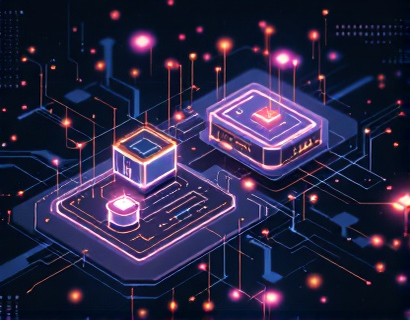Next-Gen Connectivity: Transforming Business and Personal Communication with Advanced Telecom and Internet Solutions
The rapid evolution of telecommunications and internet services has revolutionized the way businesses and individuals connect, communicate, and conduct operations in the digital age. This transformation is driven by advanced infrastructure and specialized software solutions that prioritize quality and customer satisfaction. The focus on enhancing connectivity and communication has led to the development of robust and efficient digital services, empowering users to navigate the modern digital landscape with unprecedented ease and reliability.
Advanced telecommunications infrastructure forms the backbone of this transformation. High-speed broadband networks, 5G technology, and fiber optic connections have significantly improved data transmission rates and reduced latency. These advancements enable seamless streaming, real-time collaboration, and instant access to cloud-based services. For businesses, this means faster decision-making, enhanced productivity, and the ability to serve customers more effectively. Individuals benefit from faster internet speeds, allowing for smoother online experiences, whether it's video conferencing, gaming, or streaming high-definition content.
One of the key components of next-gen connectivity is the deployment of dense and distributed network architectures. Small cells, macro cells, and fixed wireless access points work together to create a comprehensive coverage network. This approach ensures that even remote and underserved areas receive reliable connectivity. The integration of these technologies not only expands coverage but also improves the overall quality of service, reducing dropouts and ensuring consistent performance.
Specialized software solutions play a crucial role in optimizing the performance of advanced telecom networks. Network management systems, for instance, provide real-time monitoring and analytics, allowing service providers to proactively identify and resolve issues. These systems can predict network congestion, optimize resource allocation, and enhance security measures. For businesses, this translates to a more stable and secure network environment, which is essential for critical operations and data protection. Individuals benefit from a more reliable internet experience, with fewer interruptions and better privacy safeguards.
Cloud computing is another pivotal technology that has transformed communication and data management. Cloud services offer scalable and flexible solutions for storing, processing, and sharing data. Businesses can leverage cloud platforms to host applications, manage customer relationships, and collaborate across teams without the need for extensive on-premises infrastructure. This not only reduces costs but also enhances agility and scalability. For individuals, cloud services provide easy access to files and applications from any device with an internet connection, fostering a more connected and mobile lifestyle.
The Internet of Things (IoT) is another area where advanced connectivity is making a significant impact. IoT devices, ranging from smart home appliances to industrial sensors, rely on robust and reliable connectivity to function effectively. These devices collect and transmit data in real-time, enabling smarter decision-making and automation. For businesses, IoT solutions can optimize supply chains, enhance customer experiences, and improve operational efficiency. Individuals enjoy the convenience of smart homes, health monitoring devices, and personalized services, all powered by seamless connectivity.
5G technology, the latest generation of mobile networks, is a game-changer in the realm of connectivity. With peak data rates up to 20 Gbps and latency as low as 1 millisecond, 5G enables new possibilities in various sectors. In the business world, 5G facilitates the deployment of augmented reality (AR) and virtual reality (VR) applications, remote surgery, and real-time data analytics. For consumers, 5G means ultra-fast downloads, high-quality streaming, and lag-free online gaming. The widespread adoption of 5G is set to further bridge the digital divide, providing more people with access to high-speed internet and advanced digital services.
Network slicing, a key feature of 5G, allows operators to create multiple virtual networks on a single physical infrastructure. Each slice can be tailored to meet specific requirements, such as low latency for autonomous vehicles or high bandwidth for media streaming. This flexibility ensures that different use cases can coexist without compromising performance. For businesses, network slicing provides a customizable and efficient way to manage diverse network needs, while individuals enjoy a more tailored and optimized internet experience.
Cybersecurity is an essential aspect of advanced telecom and internet solutions. As connectivity becomes more pervasive, the risk of cyber threats also increases. Service providers must implement robust security measures to protect user data and maintain trust. Advanced encryption techniques, intrusion detection systems, and regular security audits are critical components of a comprehensive security strategy. For businesses, strong cybersecurity is vital for protecting sensitive information and maintaining compliance with regulatory standards. Individuals benefit from a safer online environment, with better protection against identity theft and data breaches.
The integration of artificial intelligence (AI) and machine learning (ML) in telecom networks is transforming how services are delivered and managed. AI-driven analytics can predict user behavior, optimize network performance, and automate routine tasks. For instance, AI can dynamically adjust network resources based on real-time demand, ensuring optimal performance and minimizing downtime. For businesses, AI-powered solutions can enhance customer service through chatbots and personalized recommendations. Individuals enjoy a more intuitive and responsive digital experience, with services that adapt to their needs.
Edge computing is another emerging technology that complements advanced connectivity. By processing data closer to the source, edge computing reduces latency and bandwidth usage, making it ideal for applications that require real-time processing. For businesses, edge computing enables faster response times for critical operations, such as industrial automation and smart city initiatives. Individuals benefit from quicker load times and smoother interactions with web and mobile applications, enhancing overall user experience.
The transition to advanced telecom and internet solutions is not without challenges. One of the primary concerns is the digital divide, where certain regions and populations lack access to high-speed internet. Addressing this issue requires targeted investments in infrastructure and policies that promote equitable access. Service providers and governments must collaborate to ensure that everyone can benefit from the advancements in connectivity. For businesses, this means expanding their reach to underserved markets, while individuals gain access to essential digital services and opportunities.
Another challenge is the management of spectrum resources. As more devices connect to the internet, the demand for spectrum increases, leading to potential congestion. Efficient spectrum management and the utilization of new frequency bands, such as millimeter waves, are crucial for sustaining growth. Regulatory bodies play a key role in allocating spectrum and setting standards to prevent interference and ensure fair access. For businesses, this means navigating complex regulatory environments, while individuals enjoy a more stable and reliable internet connection.
Sustainability is also an important consideration in the deployment of advanced telecom infrastructure. The energy consumption of data centers and network equipment is significant, and there is a growing need for eco-friendly solutions. Service providers are adopting renewable energy sources, energy-efficient technologies, and sustainable practices to reduce their environmental footprint. For businesses, this translates to lower operational costs and a reduced carbon footprint. Individuals benefit from a more sustainable digital ecosystem, contributing to a healthier planet.
The future of next-gen connectivity holds even more promise. The development of 6G technology is on the horizon, promising even higher speeds, lower latency, and greater capacity. 6G is expected to support a massive number of connected devices, enabling widespread adoption of IoT and smart technologies. For businesses, 6G will unlock new possibilities in areas such as autonomous vehicles, smart cities, and advanced manufacturing. Individuals will enjoy even faster and more reliable connectivity, opening up new avenues for entertainment, education, and communication.
In conclusion, the advancements in telecom and internet services are transforming the way we connect and communicate. Through cutting-edge infrastructure and specialized software solutions, service providers are delivering high-quality, reliable, and efficient digital services. These advancements not only enhance the user experience but also drive innovation and economic growth. As we continue to embrace these technologies, it is essential to address the challenges and ensure that the benefits of next-gen connectivity are accessible to all.










































